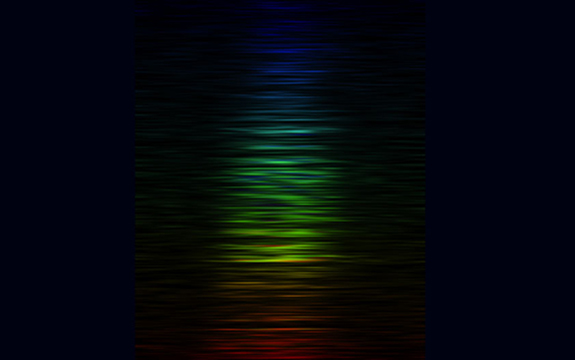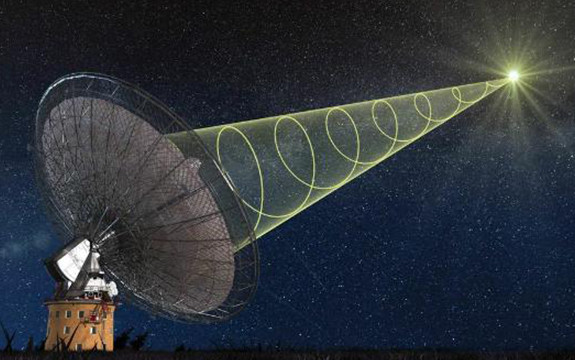Flash of invisible light helps astronomers map the cosmic web

In Summary
- One of the brightest Fast Radio Bursts ever seen has given scientists new insight into the fabric of the Universe
- The flash was captured by CSIRO’s Parkes radio telescope
- It was analysed by a system developed by the supercomputing group at Swinburne
A brief but brilliant burst of radiation that travelled at least a billion light years through Space to reach an Australian radio telescope last year has given scientists new insight into the fabric of the Universe.
The flash, known as a Fast Radio Burst (FRB), was one of the brightest seen since FRBs were first detected in 2001.
It was captured by CSIRO's Parkes radio telescope and analysed by a system developed by the supercomputing group led by Swinburne’s Professor Matthew Bailes.
This FRB, the 18th detected so far, contained information about the cosmic web – the swirling gases and magnetic fields between galaxies.
"FRBs are extremely short but intense pulses of radio waves, each only lasting about a millisecond. Some are discovered by accident and no two bursts look the same," Dr Ryan Shannon from the Curtin node of the International Centre for Radio Astronomy Research and CSIRO, says.
"This particular FRB is the first detected to date to contain detailed information about the cosmic web – regarded as the fabric of the Universe – but it is also unique because its travel path can be reconstructed to a precise line of sight and back to an area of space about a billion light years away that contains only a small number of possible home galaxies.
 The Parkes telescope has been a prolific discoverer of FRBs, having detected the vast majority of the known population including the very first, the Lorimer burst, in 2001.
The Parkes telescope has been a prolific discoverer of FRBs, having detected the vast majority of the known population including the very first, the Lorimer burst, in 2001.
The flash is thought to have originated outside the Milky Way. It reached CSIRO's Parkes radio telescope mid-last year and was subsequently analysed by a mostly Australian team.
"Ultimately, FRBs that can be traced to their cosmic host galaxies offer a unique way to probe intergalactic space that allow us to count the bulk of the electrons that inhabit our Universe," Professor Bailes says.
"To decode and further understand the information contained in this FRB is an exceptional opportunity to explore the physical forces and the extreme environment out in Space."
A paper describing the FRB and the team's findings has been published in the journal Science.
Read more about this discovery at http://caastro.org/news/2016-frb

